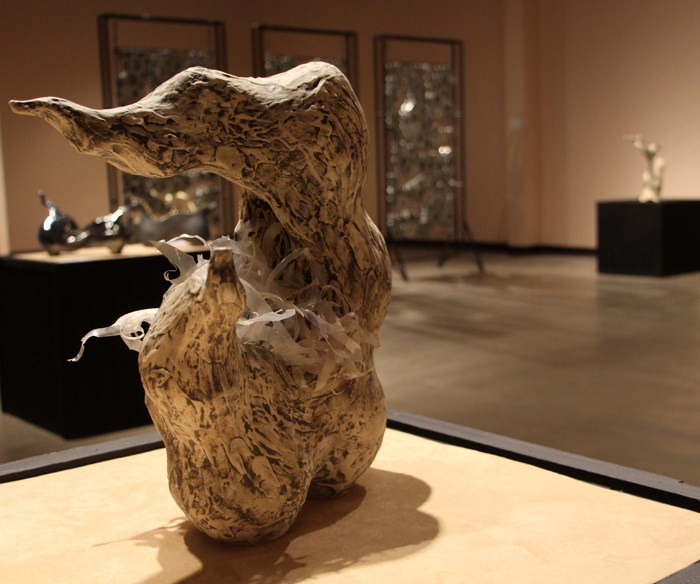Analog or digital? That’s the choice at the Godfrey Dean Art Gallery, as two shows running this August each embrace one side of the analog and digital divide.
MIX by Paula Cooley combines sculpture with found materials like metal and plastic to make organic but aggressive pieces that get increasingly threatening as the viewer gets close.
“You go to touch it, and it bites you. She has sculptures here referencing the prickly pear cactus, so they are very delicious and they are very beautiful sculpture, but even these sculptures, if you get too close, they will open your leg, they’ll scratch your leg, they’ll tear clothing, they are very subtly dangerous,” says Don Stein, Executive Director of the Godfrey Dean Art Gallery.
The use of found objects also gives some of the work an environmental message, evoking driftwood found on the beach while getting filled with found plastic from soda bottles, making a point about the environment without being aggressive about the message.
“We romanticize the beach, but these days the oceans are filled with garbage,” Stein says.
The work has a large amount of detail, and Stein says that looking at it daily he notices new details and dimensions to the work every time.
“Nothing is thoughtlessly put there, everything had some kind of careful placement.”
The amount of skill required to make the work is most apparent in the largest piece, a large screen featuring nearly transparent pottery. Stein says that installing the work took not only skill but time, as each piece is carefully placed by hand. Cooley and her partner took nine hours to install the piece in the gallery.
“Each piece is not only placed by hand, but it’s a little hand made cylinder, and it’s imprinted on the outside with lace, much of it her grandmother’s vintage, heritage lace... It’s also a play on a lace curtain made out of steel and mud.”
Portray by Shannon Yashcheshen is built out of a digital culture, with portraits built out of twitter feeds, pixelated images and people wearing superhero costumes. The images, drawn from the online feeds and self-expression of their subjects, are about self identity and the constructed images people make for themselves online.
“You can see in there how many uncertain young people have posted almost identically the same picture of them staring tentatively or hopefully into the camera. They look shy or moody or whatever, you could probably break down Facebook portraits into broad categories,” Stein says.
The work also contains an optical illusion if you see them in the right location.
“If you stand back ten to fifteen feet and squint, they stop being pixelated and they start being portraits. That’s one of the things that’s interesting and one of the reasons people paint pixelated things, because once you do that and once they turn into faces for your eyes, you have that conversation, it’s more than just thing on the surface that your eye picks up. Vision is much more than what your optic nerve picks up for light, your brain turns that into something you can recognize. Those really show you where that barrier is.”



